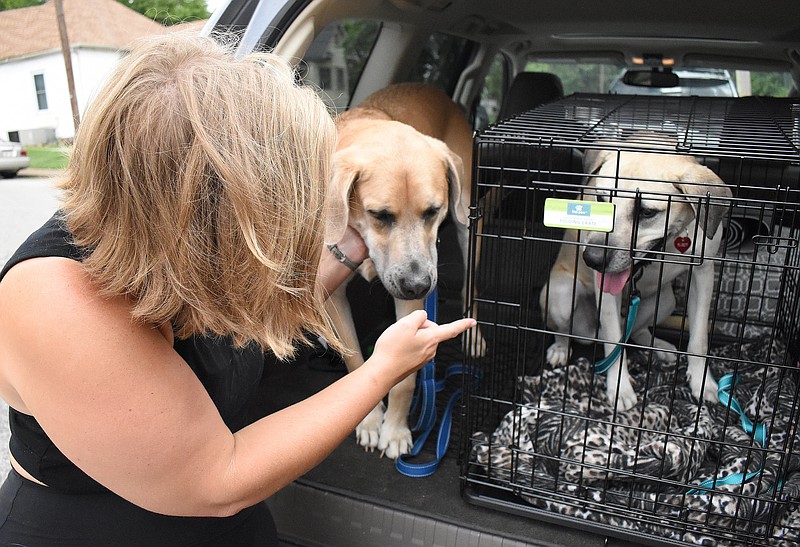The Chattanooga area's two largest animal shelters are at or near maximum capacity as animal intakes rise and adoptions decline.
McKamey Animal Center is at full capacity and accepting only emergency animal intakes.
"We have been nearing our maximum capacity for a while now," Executive Director Inga Fricke said.
She said factors such as kitten season - the period between April and October when cats tend to produce more litters than other times of year - always lead to an uptick in animal intake in the summer.
"But right now, it's definitely gotten to crisis point for us," said Fricke, whose shelter serves Chattanooga, Red Bank and Lakesite.
The Humane Educational Society serves unincorporated areas of Hamilton County as well as Soddy-Daisy, Collegedale, Walden, Ridgeside and Signal Mountain. The shelter is close to the maximum capacity it can maintain and still accept incoming animals from its service areas, Executive Director Rebecca Bryan said.
"Capacity isn't just a measure of the number of kennels we have in a shelter," Bryan said, adding that the biggest factor affecting the capacity of shelters is the difficulty in finding people to adopt or foster animals. "Folks are going back to work, fall school schedules are up in the air and families are under a lot of pressure right now."
Many people took the opportunity afforded to them while working at home during the pandemic to adopt a pet, and although McKamey did not expect or experience an influx of animals being returned as people began to return to offices, the shelter did see animal intake return to pre-pandemic levels.
How to help
— Adoption is the biggest need, but fostering animals — even for just a few days — is a huge help for shelters. “Having those spaces in the community for animals to go into is essential for us right now,” Fricke said.— Volunteer to help with animal enrichment, such as walks, to help enhance quality of life for animals as they await forever homes and reduce the workload of shelter staff.— Be patient with shelters that are at maximum capacity as they continue to serve their communities. “We understand that this is a change for the community and that some people may be asked to hold onto a pet that they need to surrender for a little bit longer than they would like to, but we’re really asking people to have the patience with us,” Fricke said. “[Accepting only emergency intakes] is something that we need to do for the health and wellness of the animals in our care.”For more information on adopting, fostering or volunteering, visit mckameyanimalcenter.org or heschatt.org.
But adoption rates are not keeping up with intake.
According to a survey conducted by 24PetWatch of more than 150 shelters nationwide, animal intakes increased by 5.9% in 2021 over 2020, while adoptions decreased by 3.7% during the same period.
"Most homes that might have considered taking an animal already took one or more, last year," Fricke said.
The same survey showed that 88% of shelters are short staffed. That leads to a host of issues, including limiting the number of animals shelters can care for and limiting hours shelters are open for adoptions, said Angela Rovetto, senior strategist of the East Region of national animal welfare organization Best Friends Animal Society.
Also, animals are staying longer in shelters nationwide.
"As a result, the [humane society] animal transport program has very limited opportunities for placement, especially for large dogs, pit mixes and heartworm-positive dogs," Bryan said.
On top of all of that, natural disasters such as Hurricane Ida are displacing animals in the storm's path and putting more strain on an already overwhelmed rescue transport network.
"It's kind of a perfect storm in certain ways," Rovetto said.
In the past, both McKamey and the Humane Educational Society have taken in animals displaced by storms such as Hurricane Laura. Due to lack of capacity, McKamey was unable to do so for Ida.
Although the humane society could help only a limited number of animals because of capacity and lack of local placements, the shelter offered temporary holding space as a layover for animals on transports to other areas. It also assisted with animal triage and served as a pit-stop for transport drivers to clean vehicles, Bryan said.
Contact Emily Crisman at ecrisman@timesfreepress.com.
